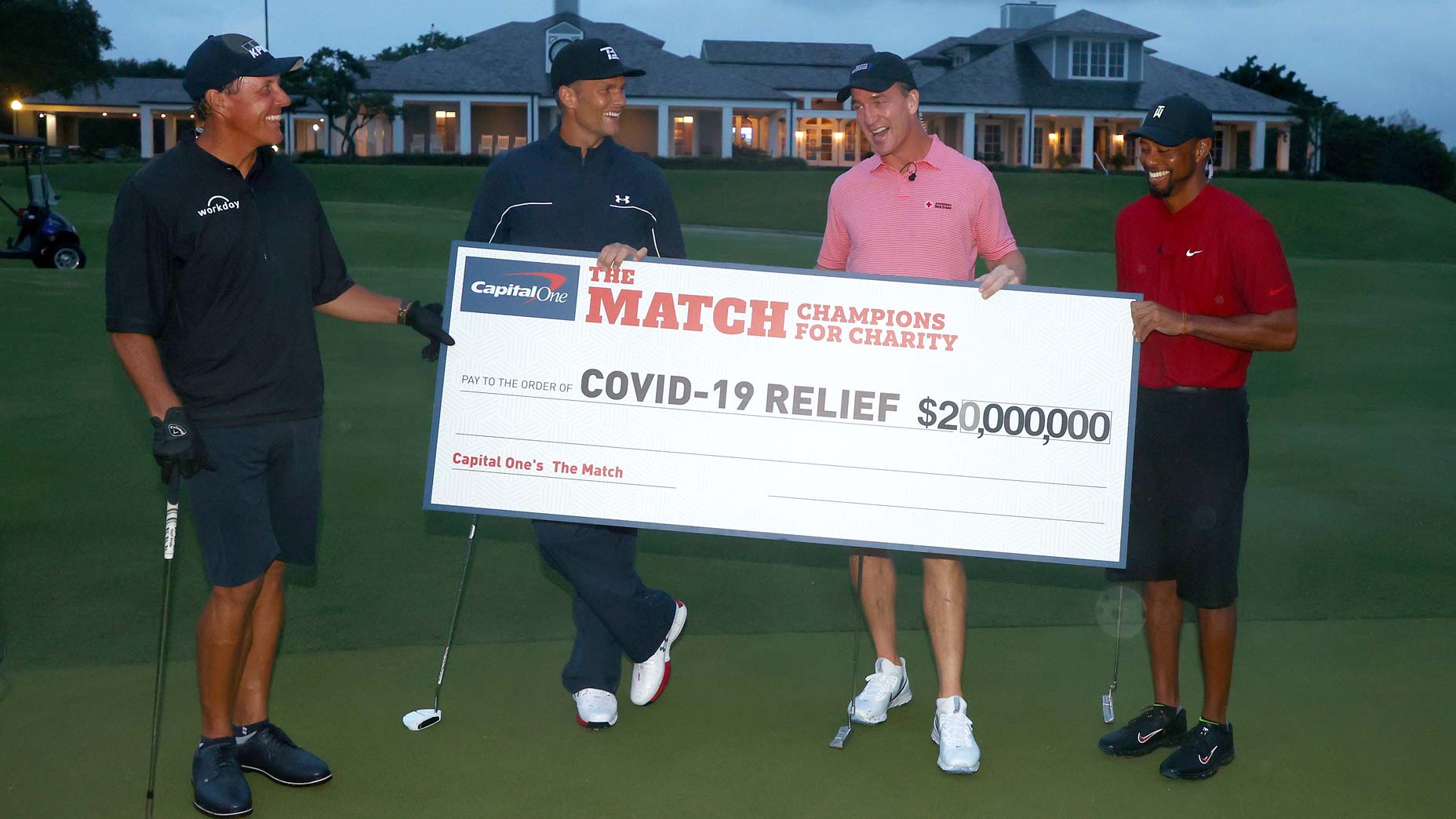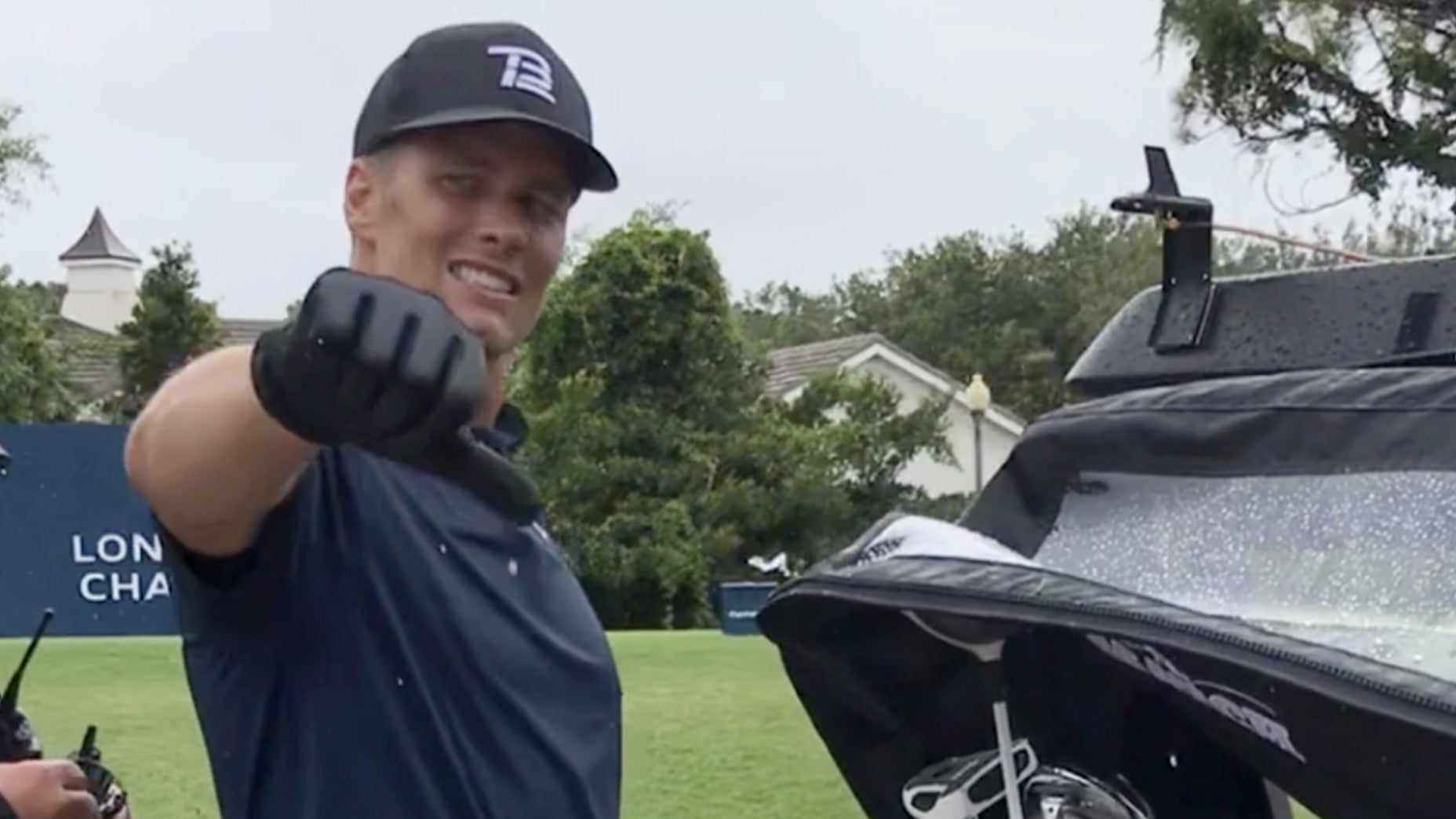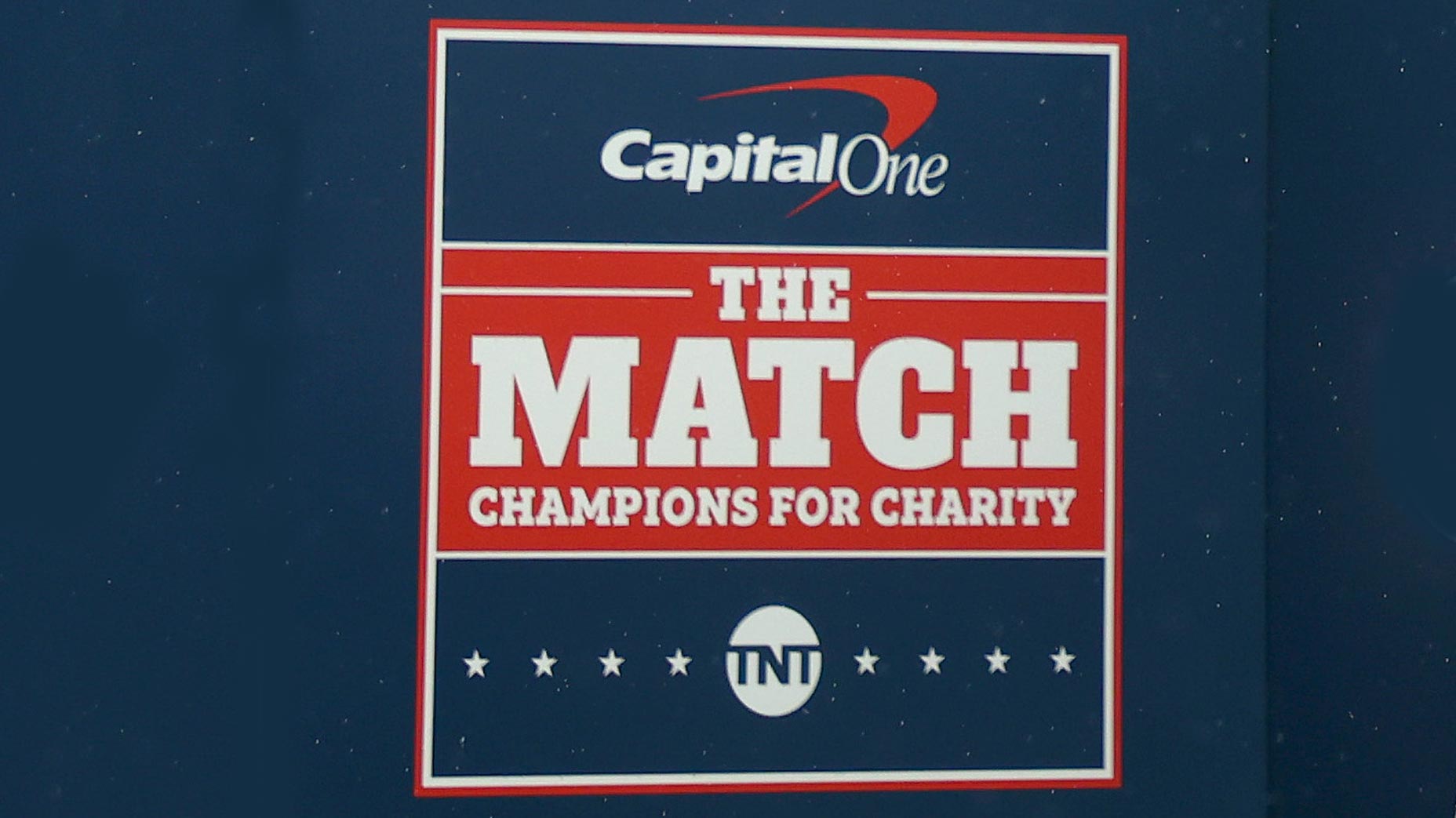Medalist greens cheat sheet: A member’s crib notes on all 18 putting surfaces
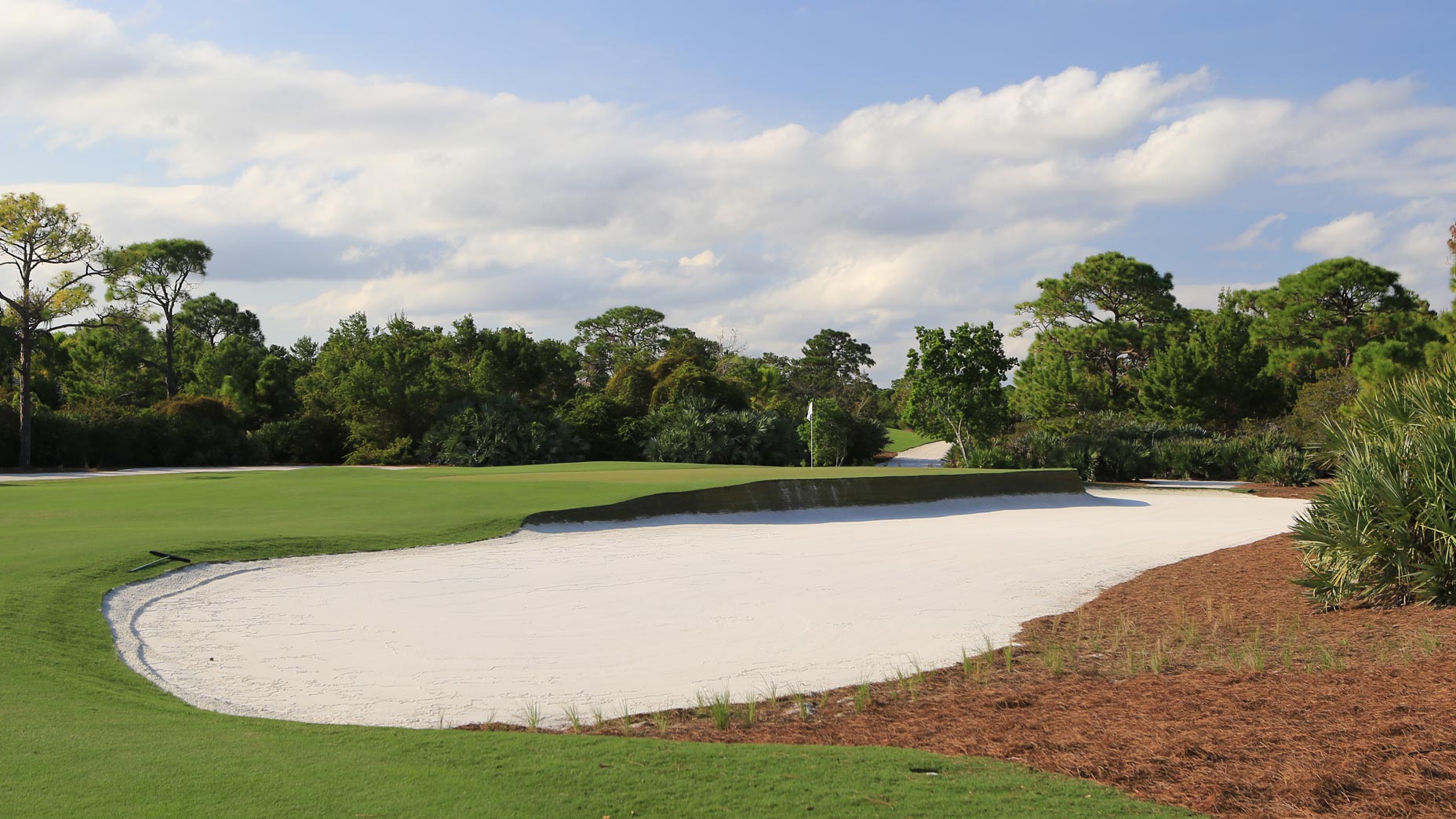
The putting surfaces at Medalist provide a stern test.
Medalist Golf Club
Every part of the Pete Dye-Greg Norman collaboration at Medalist is a shin-kicker.
The length, the carries, the bunkers, the water, and yes, the greens. For a better understanding of the putting surfaces, we paired heat maps from GolfLogix greenbooks with notes from the expert eye of Jeff Lewis, a Medalist member since 1996 and GOLF course ranking panelist since 2003. (GOLF.com and GolfLogix are affiliates of 8AM Golf.)
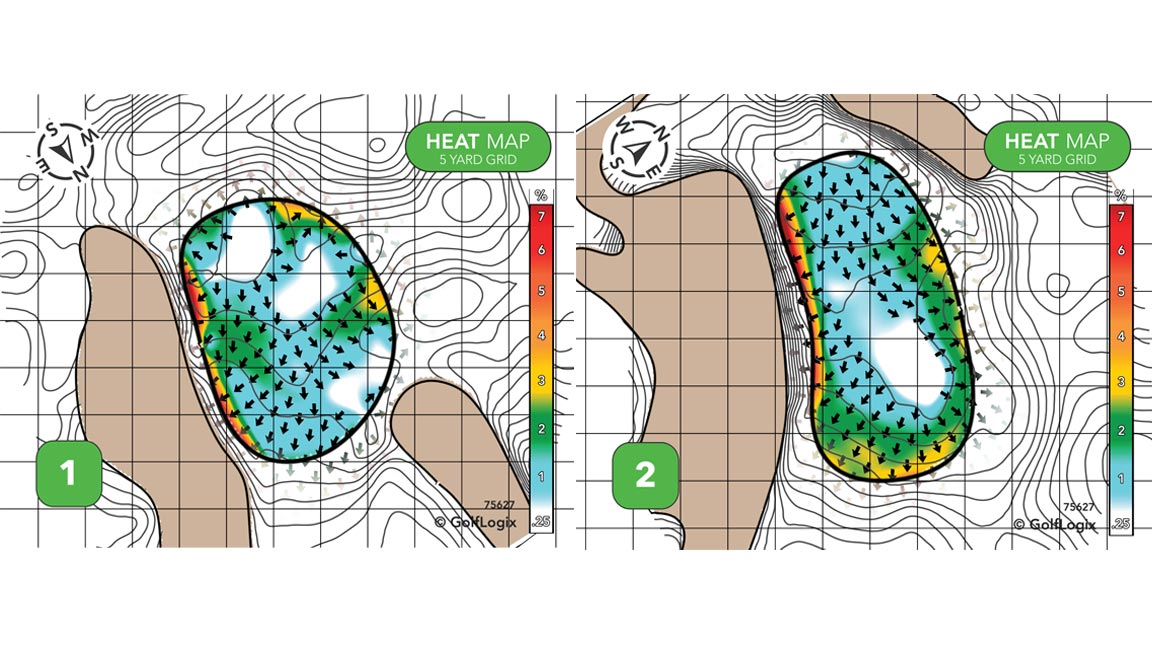
No. 1, Par-4, 399 yards
There is an interesting spine that runs right down the middle of it, so even though it’s a relatively tame opener, it’s hard to make birdies there.
No. 2, Par-4, 467 yards
One of the best holes on the course for sure and basically unchanged from the beginning. Two forced carries. The green is accepting of a wide variety of shots.
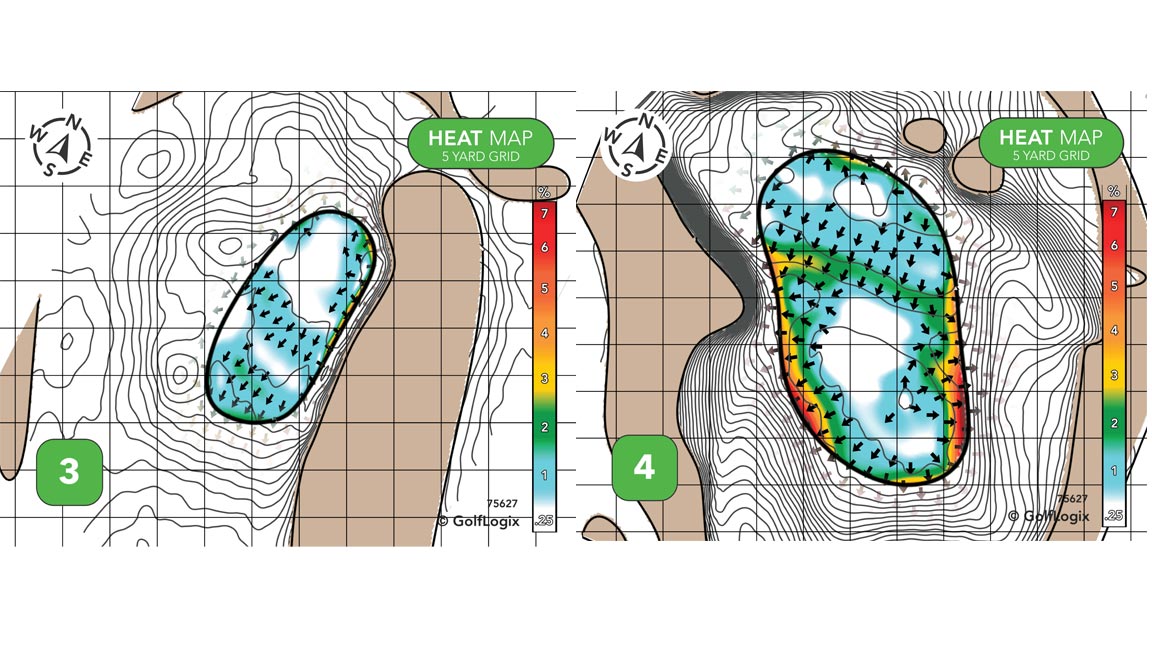
No. 3, Par-5, 554 yards
Tiny green on a reachable par 5.
No. 4, Par-3, 190 yards
Has changed a gazillion times. Now extremely treacherous with falloffs on every side. Probably one of the most difficult greens on the course — almost plays like an island green.

No. 5, Par-4, 408 yards
The original was one of the best greens in Florida, the second iteration was one of the worst. This is in between.
No. 6, Par-4, 476 yards
The original hole was remarkable — a 14 at Augusta type of green. What we have now is pretty bland.

No. 7, Par-5, 521 yards
Reachable 5, green not especially troublesome.
No. 8, Par-3, 205 yards
Par 3 with water right. One of the toughest holes on the course. Tough green with a collection area on the right. Lots of interesting pins. The back of the green is kind of the high point. There are some interesting pitches from the bailout area on the left. The water down the right gets a ridiculous amount of play because the hole plays toward the ocean, so it’s often into the wind.

No. 9, Par-4, 468 yards
Great par 4. Big green, not wildly slopey.
No. 10, Par-4, 402 yards
Been a challenging green to get right and it keeps changing. With the right wind, pros can try to drive it.

No. 11, Par-4, 342 yards
Version two of the green was shockingly bad. Now it’s relatively clean. Should be driveable for the pros.
No. 12, Par-3, 205 yards
Huge green. Distinct sections. Manageable for the pros.
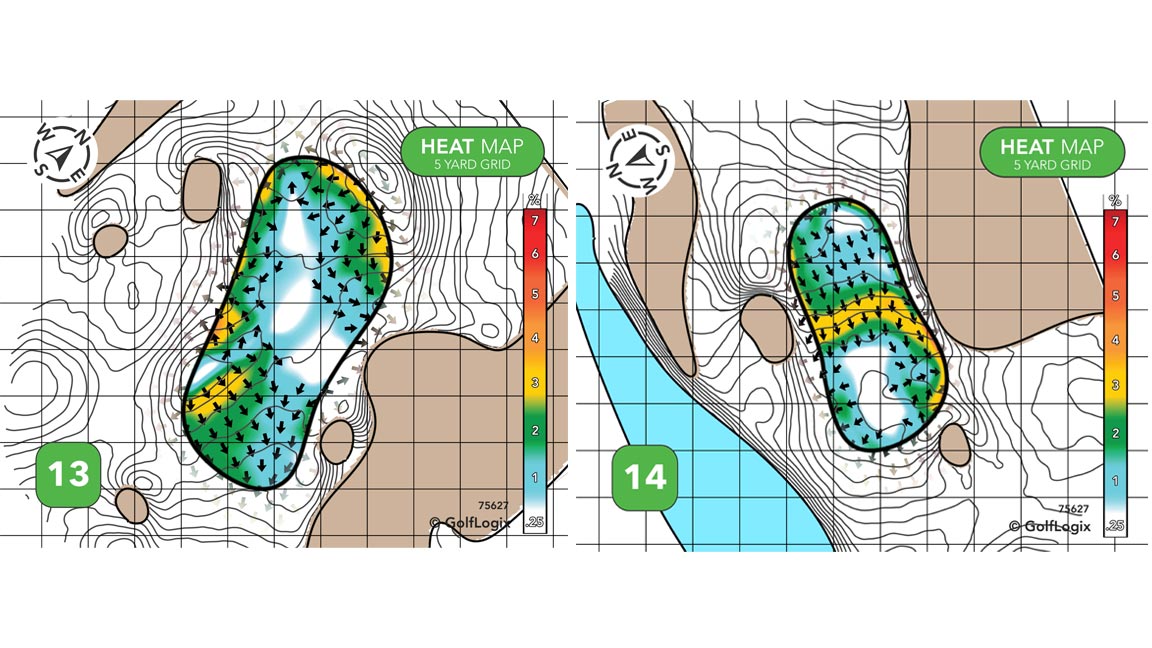
No. 13, Par-5, 590 yards
Longest hole on the course. Will they try to cut off the dogleg? Again, the green is manageable without a big slope.
No. 14, Par-4, 321 yards
Pretty much unchanged from the beginning. Driveable. Only one tee for all players on the course. Small green. Terrific hole.

No. 15, Par-4, 488 yards
Another outstanding par 4. More slope on this green than most.
No. 16, Par-3, 212 yards
Great par 3. Enough said.

No. 17, Par-5, 550 yards
Was a 5, then a 4, now a 5 again. Green is too small and oddly situated.
No. 18, Par-4, 444 yards
Was a 4, then a 5, now a 4 again. In one of the original incarnations this was an enormous Oakmont-style combo green with the practice green. The hole was really memorable, with an interesting ridge in the landing area. Now, it’s pretty tame. The artificial mounds on the left were added in the Norman tinkering and are some of the most regrettable artificial mounds anywhere.
*****
GolfLogix greenbooks are available for courses all over the world. Learn more about them here.
Greenbooks by GolfLogix
Editor’s Picks

Here are 8 lightweight golf bags perfect for walking the course

Phil Mickelson ‘What’s in the bag?’ 2020: Here are Phil’s clubs for The Match II

What is Tom Brady’s handicap? A look at the NFL star’s golf game ahead of Tiger-Phil Match II









